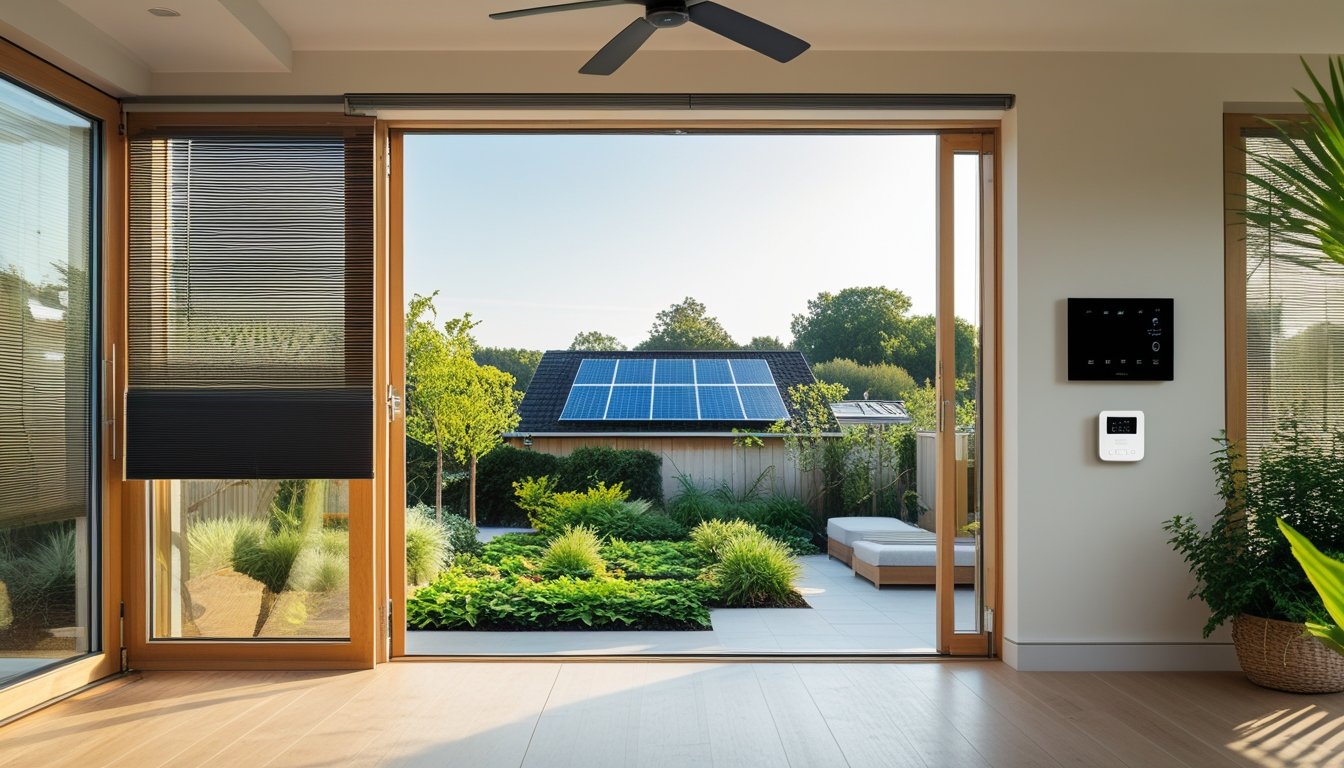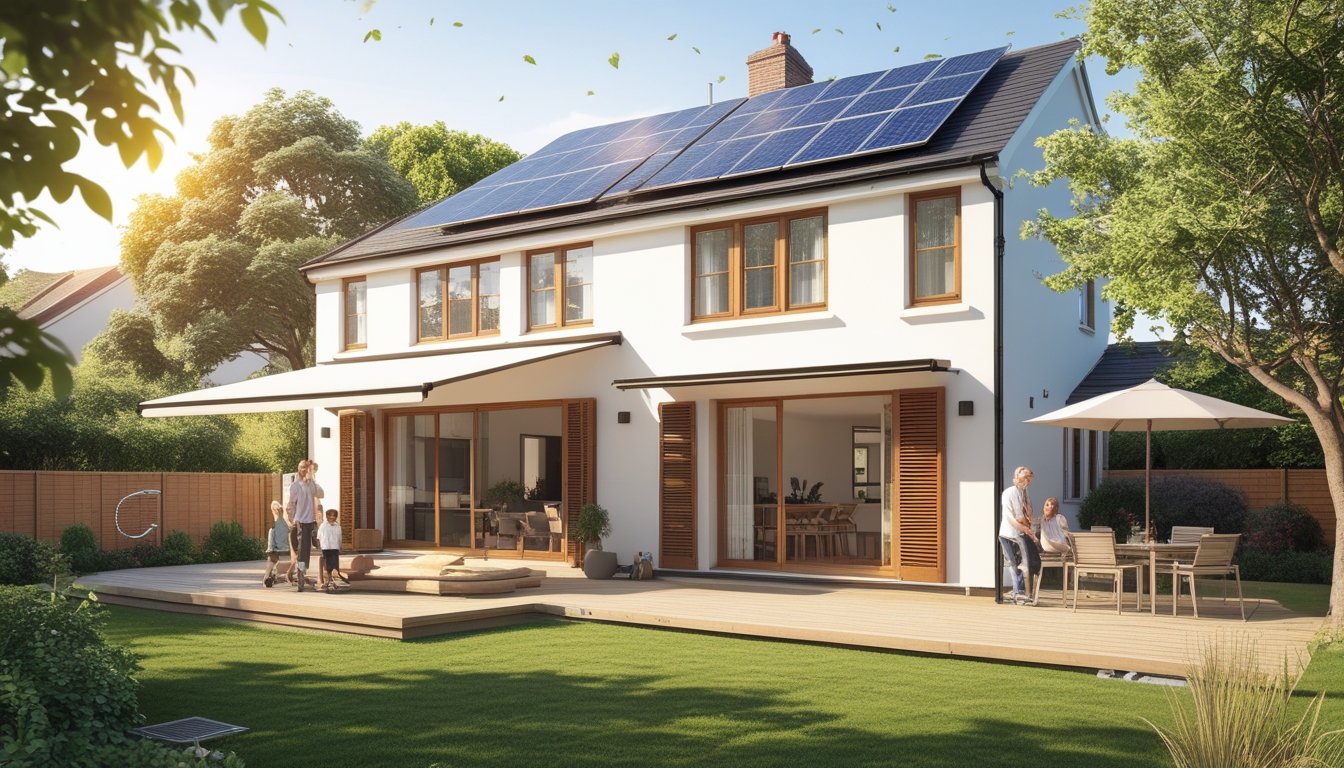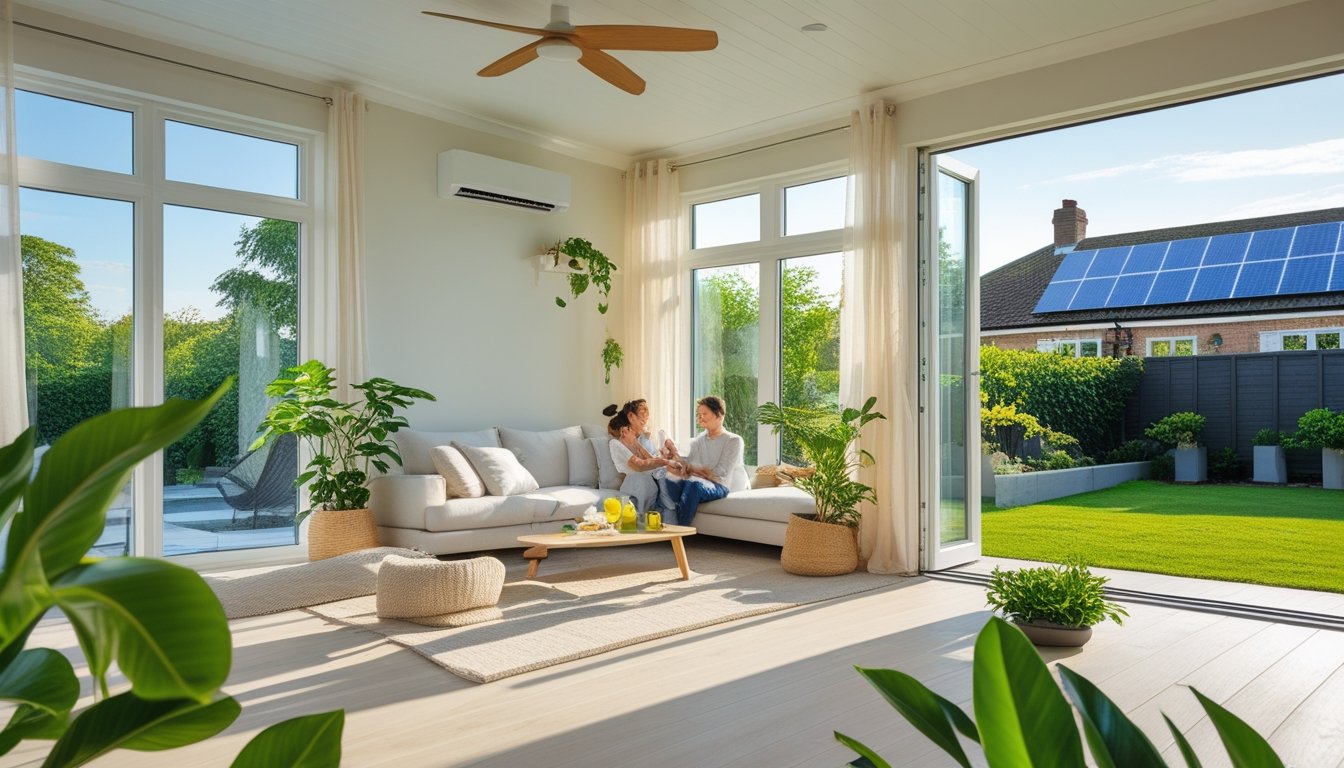Late updated: 21 Aug 2025 09:08
Written by: Eleanor Hartman
Sustainable Home Cooling Solutions For British Summers: Eco-Friendly Tips
As British summers grow increasingly warm, the comfort of our homes becomes a priority. For those of us mindful of sustainability, seeking eco-friendly cooling solutions can be both practical and rewarding. Opting for sustainable home cooling solutions not only reduces energy consumption but also lessens our carbon footprint, making it a win-win for us and the environment.

In our pursuit of comfort, it's important to remember that traditional air conditioning units often come with significant environmental costs. The search for alternative methods that achieve cooling while being kind to our planet is essential. By exploring options like natural shading, effective ventilation, and energy-efficient appliances, we can maintain a comfortable home while championing sustainability.
Whether it’s planting shade trees, using reflective window films, or incorporating smart technology within our living spaces, there are numerous ways to achieve the comfort we crave during those sweltering months. Exploring these sustainable cooling methods provides both immediate comfort and long-term benefits for the environment.
Key Takeaways
- Choose eco-friendly cooling methods to cut energy use and emissions.
- Explore innovative cooling techniques for lasting comfort.
- Effective sustainable cooling benefits both home and environment.
Core Principles of Sustainable Home Cooling for British Summers

In an era of increasing concern for environmental sustainability, it is crucial that we prioritise effective home cooling strategies that are sensitive to the climate of the UK. Sustainable home cooling is not merely about reducing temperatures but ensuring comfort while minimising energy consumption and environmental impact.
Understanding Comfort and Sustainability
Comfort in a British summer does not solely depend on maintaining a cool indoor temperature. It involves achieving a balance between temperature, humidity, and air flow. Sustainable solutions focus on using natural methods and materials that align with local weather patterns.
Such strategies help in maintaining a comfortable indoor environment without excessive reliance on energy-consuming systems. Emphasising passive cooling methods like strategic shading and natural ventilation aligns with sustainability goals.
Energy Efficiency and Reducing Environmental Impact
Our choices profoundly affect energy use and the environment. Energy efficiency is a cornerstone of sustainable cooling solutions. Prioritising energy-efficient systems that adapt to changes in outdoor temperatures can significantly lower energy consumption.
Utilising technologies such as MVHR (mechanical ventilation with heat recovery) with integrated cooling and air-source heat pumps can help. These systems work to maintain pleasant temperatures while ensuring efficient usage of resources, ultimately reducing our carbon footprint.
Key Features of Cooling Solutions for UK Homes
For British homes, integrating key cooling features designed for the local climate is vital. External Shading is crucial; it blocks out excess heat while allowing for ventilation. Cross-Flow Ventilation is another essential feature, promoting the movement of air through open windows positioned on opposite sides of a house.
Adding energy-efficient technologies, such as radiant cooling systems, can enhance comfort. These systems distribute coolness evenly, reducing temperature variance. By employing these strategies, we support both comfort and sustainability, ensuring our homes remain cool in an eco-friendly manner.
Practical and Innovative Cooling Methods for British Homes
Addressing the unique challenges of keeping British homes cool while being eco-friendly involves a blend of traditional techniques and modern technology. Employing sustainable cooling methods can help us effectively lower indoor temperatures without heavy reliance on electricity.
Natural Ventilation Techniques
Utilising natural ventilation is one effective strategy we can adopt. It allows cool air to flow through our homes naturally. Opening windows and interior doors in alignment can create cross ventilation, enhancing air circulation. It’s particularly effective during cooler evenings and early mornings. Prioritising window placement can maximise airflow, drawing fresh, cooler air from outside. Ventilation roof vents can also assist by allowing warm air to escape upwards. These straightforward but effective methods can significantly cut down energy consumption and maintain a refreshing interior climate.
Maximising Natural Shade and Outdoor Cooling
Natural shade offers a sustainable cooling solution by reducing solar heat gain. By planting trees or installing pergolas, we can provide shade to the building envelope, thus lowering indoor temperatures. Trees not only block direct sunlight but also cool the surrounding air through transpiration. Pergolas and awnings can be equipped with climbing plants to enhance the cooling effect. Additionally, strategic garden design, such as using water features, aids in creating cooler microclimates near our homes. These outdoor modifications help maintain comfortable temperatures with minimal energy reliance.
Reflective Window Films and Sun Control
Incorporating reflective window films is a smart solution to minimise heat entering through windows. These films reduce solar heat gain by reflecting sunlight away, thereby keeping interiors cooler. They also diminish glare and protect furnishings from UV damage. Complementary strategies include installing external louvres or shutters, which provide adjustable shielding from the sun. Together, these tools offer an energy-efficient alternative to mechanical cooling. This technique is particularly relevant for homes with large window areas that trap heat.
Heat Pumps and Renewable Cooling Systems
Heat pumps stand out as an innovative approach to sustainable home cooling. Leveraging geothermal or air-source technology, these systems transfer heat from inside the home to outside, effectively cooling interiors. Unlike traditional air conditioners, heat pumps can also provide heating, improving overall efficiency. When paired with renewable energy sources, such as solar panels, they offer a dual advantage of reduced carbon footprint and operational cost. By integrating renewable cooling systems, we can significantly lower the environmental impact while ensuring comfortable home temperatures.
Frequently Asked Questions

As British summers grow warmer, eco-friendly home cooling solutions are essential. We examine cost-effective strategies, improvements to energy efficiency, and sustainable technologies. We consider how passive cooling techniques, landscaping, and government incentives contribute to a cooler home environment.
What are the most cost-effective strategies for cooling homes in the UK?
Effective strategies include using natural ventilation, such as opening windows at night when temperatures are lower. During the day, keeping curtains and blinds closed can minimise heat gain. Ceiling or portable fans offer a low-cost solution for circulating air and enhancing comfort.
How can I improve the energy efficiency of my existing home cooling system?
Regular maintenance, such as cleaning filters, ensures optimal performance. Upgrading to energy-efficient models or using programmable thermostats helps reduce electricity consumption. Sealing gaps around windows and doors also minimises energy losses.
Which sustainable technologies are best suited for cooling homes in hot weather?
Solar-powered air conditioning units are a promising technology, reducing reliance on conventional electricity. Geothermal cooling systems provide consistent performance by leveraging the earth's natural temperature. Both options offer eco-friendliness and efficiency.
What are the top passive cooling techniques for residential buildings?
Installing reflective roofing materials can significantly reduce heat absorption. Green roofs, covered with vegetation, provide insulation and cooler indoor temperatures. Additionally, proper insulation plays a critical role in maintaining comfort levels passively.
Can landscaping contribute to reducing indoor temperatures, and if so, how?
Trees and shrubs strategically planted around the property offer shade and prevent heat from reaching walls and windows. Deciduous trees that lose their leaves in winter ensure the sun's warmth is available when needed most.
What government incentives are available for installing eco-friendly cooling systems?
The UK government provides schemes such as the Energy Company Obligation (ECO) for improving home energy efficiency. These initiatives can include grants for insulation and renewable energy upgrades, promoting sustainable home cooling options.